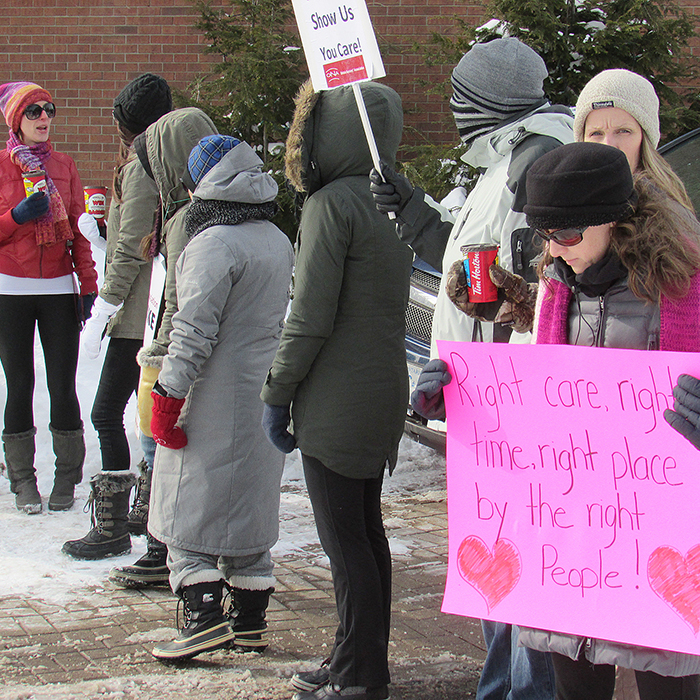
As the Ontario Nurses Association strike against the Erie St. Clair Community Care Access Centre completes its second week, Marie Kelly, ONA chief executive officer, says patient care is suffering.
“Due to privacy regulations, we can’t just give you names of people who are being put at risk, but believe me, we know these people and there are issues. If the CCAC could do the work without us, there’s little doubt they would. They aren’t nurses and they can’t do our job.”
About 60 members and supporters of the ONA from Windsor, Chatham and Sarnia held a rally outside the Chatham-Kent Civic Centre Friday.
Workers on strike are care co-ordinators (mostly nurses) who assess patients once they leave the hospital and arrange home care.
The strike affects 3,000 health professionals employed by nine CCACs across the province. More than 250 are employed locally.
They have been without a contract since March of last year. That deal included no wage increase in each of the first two years and a 2.75% increase in the last year.
Nurses’ salaries range from $59,000 to $76,000, and are several dollars per hour lower than nurses in hospitals.
The union is seeking 1.4% while the CCAC is seeking no increase.
Kelly said CCACs (which are funded by the province’s Local Health Integration Networks (LHINs) are using that funding to pay huge increases to management.
“There are tax dollars to be used to deliver care and yet they are being used to pad management salaries,” she said. “There is no oversight and very little awareness of how this money could be better used.”
The Eric St. Clair CCAC was planning massive cuts to home-care service due to a $5.9 million expected deficit for the current fiscal year before the LHIN provided a $4.1 million bail out.
The CCAC had a $100,000 deficit the year before and a $1.1 million surplus the year before that.
Administration of CCACs and LHINs provincially costs the health-care system nearly $250 million each year. The Erie St. Clair CCAC saw the number of employees making in excess of $100,000 increase from nine to 21 in less than five years.
Calls and e-mails to the CCAC seeking comment weren’t returned by press time.
The organization’s web site said, “Contingency plans have been implemented in all impacted CCACs to support the ongoing provision of priority services to patients during this labour disruption.
“All CCACs are working closely with health care partners during this strike to best support the continuity of care for all patients with minimal disruption.”






